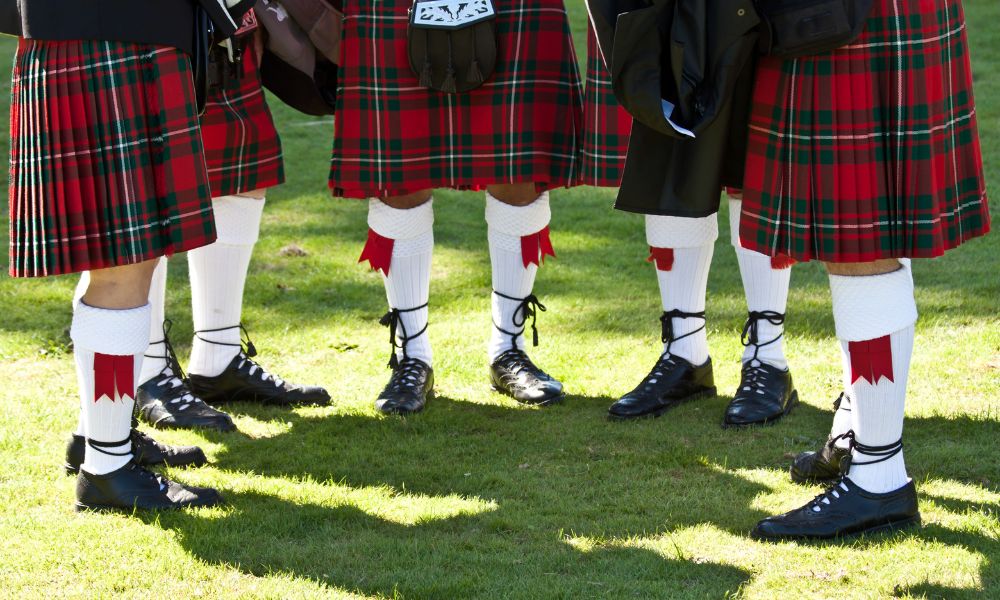Posted by Maris on 15th Jan 2024
Kilts in Scotland: Where to learn about the history of the garment and clan tartans
Everywhere I look, I see men wearing kilts. To be fair, though, people are dressed in an odd variety of costumes everywhere you look, from a chanting group of clowns dressed in fire-orange to a man in pajamas balancing on a tightrope with a unicycle. Given that I'm at The Edinburgh Festival Fringe, my outfit probably doesn't accurately represent what most people wear on a daily basis.
Kilts aren't usually worn on a daily basis, according to Howie Nicholsby, the founder of Edinburgh's 21st Century Kilts, with whom I meet. "The kilt is worn to formal events by some Scotsmen, and sometimes women," he says. "But I've worn a kilt every day since 1999 and hope to inspire more people to have the option of a kilt."

Kilts have been worn in one form or another since the 16th century, and were once worn on a daily basis, especially by Scots residing in Scotland's northern Lowland regions and the Highlands. "Back then they were made up of huge rolls of material – most likely cloth or tartan – and designed to be worn and used in all sorts of ways – coat, pillow, sleeping bag and the like," Nicholsby informs me.
We stroll and converse while Nicholsby is dressed in a denim kilt. Its three different pockets and sharply angular style make this garment quite remarkable. He appears totally at ease and has no regrets about his decision. "I made the life choice to wear only kilts when I was 21," he claims. "I haven't owned jeans or a suit for over two decades."

Although Nicholsby specializes in contemporary kilts, he gained expertise making the more traditional kilt while working at Geoffrey (Tailor) Kilt Makers, his parent's business. He now applies this knowledge and experience to his own kilt creations. "My great grandmother made kilts, my grandmother and grandfather made them, and my dad is a master tailor."
In Scotland, there are said to be between 400 and 500 clan and family associations. However, not every clan wears a tartan, and there is scant proof that tartans were linked to any clan or family names prior to the middle of the 18th century. According to a research conducted by students at Edinburgh University, only roughly 30% of people identified as belonging to a clan. Still, if you have Scottish genealogy and you visit Scotland, you might be motivated to search out your clan's tartan.

Later in the week, when I visit Highland House of Fraser in Inverness, I overhear an American man asking whether anyone in the staff knows where he can find his clan tartan. I run into the same man again upstairs at the Scottish Kiltmaker Visitor Centre, where there's a tiny display about the history of kilt-making and a chance to observe locals creating kilts. He's beaming, so I deduce that he was able to find his ancestry and order a traditional kilt that would undoubtedly end up as a family heirloom in the future.

According to Nicholsby, there aren't many traditional kilt makers anymore, but some businesses are making an effort to create a contemporary style that doesn't resemble his creations. "There aren't too many people who specialise in modern kilts," according to him. "In 1996, having just recovered from an acid psychosis, I recall sitting in my parents' workshop making a kilt. It was then that I decided I wanted to venture out and create my own unique kind of kilts. Since I was eighteen, my mentality hasn't really altered. I want to experiment and turn anything a man wears as pants—leather, corduroy, even clear PVC—into a kilt."
I have no doubt that Nicholsby will continue to make kilts from any material he wants, and based on the attendance at The Edinburgh Festival Fringe, he will find patrons willing to buy the inventive creations—even the transparent PVC kind.

